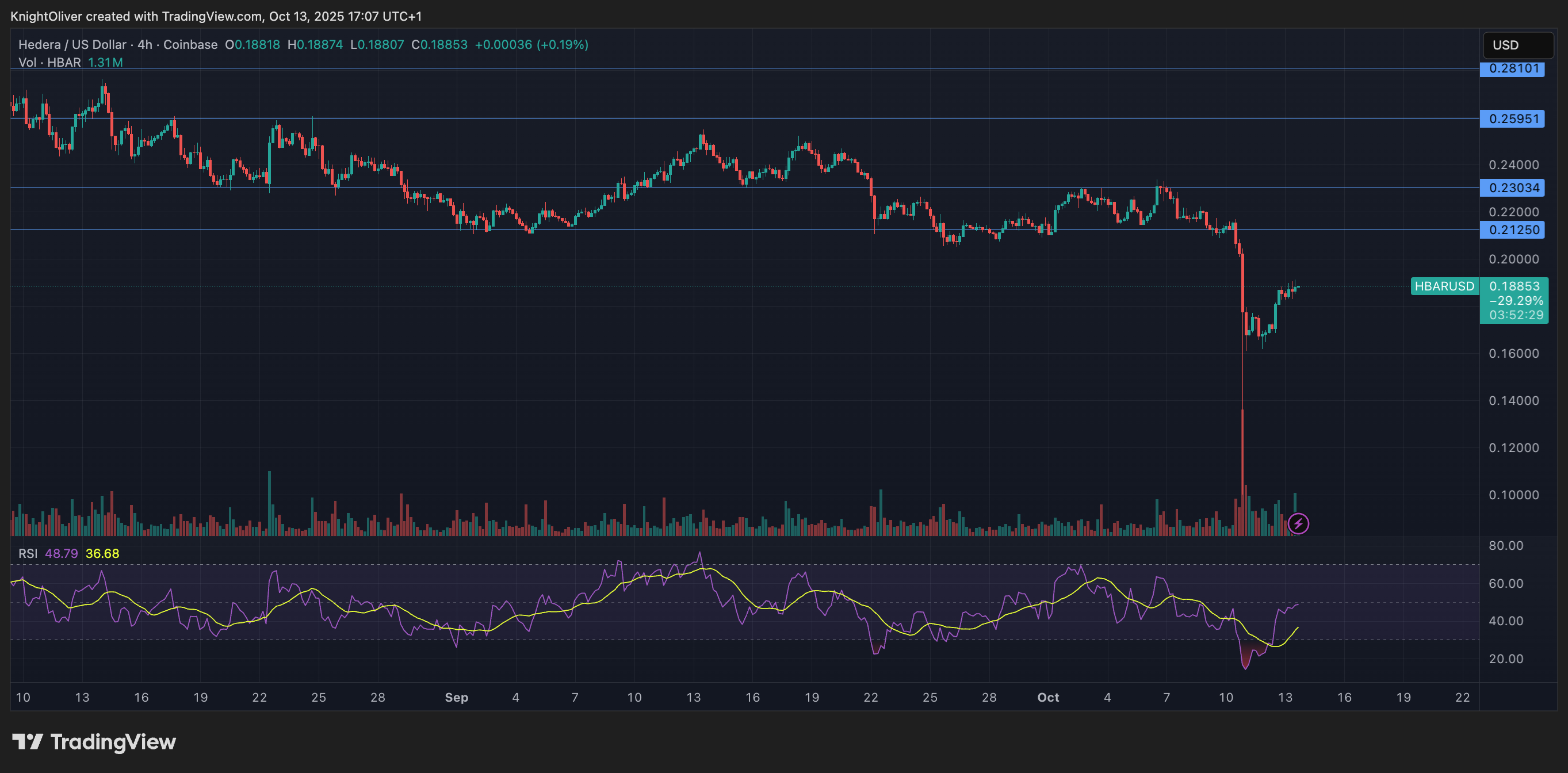Uncategorized
The Protocol: Ethereum’s Pectra Goes Live on Testnet

Welcome to The Protocol, CoinDesk’s weekly wrap-up of the most important stories in cryptocurrency tech development. I’m Ben Schiller, managing editor at CoinDesk.
In this issue:
Ethereum’s Pectra upgrade Goes Live
Avalanche Visa card launched
Ethereum Foundation executive director leaving
Hackers using GitHub to steal bitcoin
Network News
PECTRA GOES LIVE ON TESTNET: Ethereum’s Pectra upgrade went live on the Holesky testnet Feb. 24 but failed to finalize in the expected time. The Pectra hard fork combines together 11 major upgrades, or «Ethereum improvement proposals» (EIPs), into one package. At the heart of this is EIP-7702, which is supposed to improve the user-experience of crypto wallets. The proposal, which was scribbled by Ethereum co-founder Vitalik Buterin in just 22 minutes, will allow wallets to have some smart contract capabilities, as part of a broader strategy to bring account abstraction to Ethereum — a concept that makes the usability of wallets a lot less clunky.
Another key proposal, EIP-7251, will allow validators to increase the maximum amount they can stake from 32 to 2,048 ETH. The proposal is supposed to ease some of the technicalities that validators who stake ETH face today: Those that stake more than their 32 ETH have to spread that across multiple validators, making the process a bit of a nuisance. By lifting the maximum stake limit and combining those validators, it could speed up the process of setting up new nodes. Holesky is the first of two testnets to run through a simulation of Pectra. The next test is supposed to occur on the Sepolia testnet on Mar. 5. But according to Christine Kim, a Vice President of Research at Galaxy, developers could delay it depending on the scale of today’s issue. After Pectra goes live on both testnets, developers will ink in a final date to activate the upgrade on mainnet. — Margaux Nijkerk Read more.
MIYAGUCHI LEAVES ETHEREUM FOUNDATION ROLE: Ethereum Foundation Executive Director Aya Miyaguchi is leaving her position to transition to a new role as president at the organization. The news comes as the nonprofit goes through a leadership shake-up and as Ethereum has become less popular for new builders in recent months, with some even blaming Miyaguchi’s leadership as for why the blockchain’s token price is lagging behind other cryptocurrencies. “This new opportunity will allow me to continue supporting EF’s institutional relationships, and to expand the reach of our vision and culture more broadly,” Miyaguchi wrote in a blog post published Feb. 25. The Ethereum Foundation is a nonprofit that supports the development of the Ethereum blockchain. Founded in 2014, Miyaguchi joined in 2018 and has been the executive director ever since. Ethereum co-founder Vitalik Buterin wrote in a post on X that “every success of the EF — the steady execution of Ethereum hard forks, client interop workshops, Devcon, Ethereum’s culture and steadfast commitment to its mission and values, and more — is in part a result of Aya’s stewardship.” — Margaux Nijkerk Read more.
AVALANCHE VISA CARD LAUNCHES: The Avalanche Foundation, the non-profit that helps steward the development of the Avalanche blockchain, said its much-anticipated Avalanche Card, a Visa credit card that allows users to purchase items with their cryptocurrency, is live and ready to be used. The card was developed in collaboration with Rain, a blockchain-based card issuing platform. It enables users to spend their Avalanche tokens (AVAX), wrapped AVAX, and stablecoins USDT and USDC at any store that takes Visa, the foundation said in an email. While other teams have also released credit cards tied to a user’s crypto holdings, the news signals the further integration between traditional financial technologies and cryptocurrency. The Avalanche Foundation said in October that it planned to introduce the card, focusing on signing up users from Latin America and the Caribbean. According to the card’s website, the credit card will be linked to users’ “new self-custody wallet and unique address per asset.” “In a move to double down on mainstream adoption of decentralized finance (DeFi), Avalanche remains committed to powering accessible inroads to blockchain for every type of user,” the team said. — Margaux Nijkerk Read more.
HACKERS USE GITHUB TO NAB BTC: The GitHub code you use to build a trendy application or patch existing bugs might just be used to steal your bitcoin (BTC) or other crypto holdings, according to a Kaspersky report. GitHub is a popular tool among developers of all types, but even more so among crypto-focused projects, where a simple application may generate millions of dollars in revenue. The report warned users of a “GitVenom” campaign that’s been active for at least two years but is steadily on the rise, involving planting malicious code in fake projects on the popular code repository platform. The attack starts with seemingly legitimate GitHub projects — like making Telegram bots for managing bitcoin wallets or tools for computer games. Each comes with a polished README file, often AI-generated, to build trust. But the code itself is a Trojan horse: For Python-based projects, attackers hide nefarious script after a bizarre string of 2,000 tabs, which decrypts and executes a malicious payload. For JavaScript, a rogue function is embedded in the main file, triggering the launch attack. Once activated, the malware pulls additional tools from a separate hacker-controlled GitHub repository. Once the system is infected, various other programs kick in to execute the exploit. How can users protect themselves? By scrutinizing any code before running it, verifying the project’s authenticity, and being suspicious of overly polished READMEs or inconsistent commit histories. Because researchers don’t expect these attacks to stop anytime soon: “We expect these attempts to continue in the future, possibly with small changes in the TTPs,” Kaspersky said. — Shaurya Malwa Read more.
In Other News
Miners Pivoting to AI, But Bitcoin Still Makes Sense
Public bitcoin miners are rushing to build AI business lines, but there’s still room for their original mandate, says this investment bank analyst. Colin Harper, of Blockspace, reports.
Starknet Layer 2 Gets Gaming App-Chain
Nums, a sequential game built off of Starknet’s technology, is the first layer-3 to settle on the network.
Regulatory and policy
SEC, TRON Ask Court to Freeze Fraud Case Over ‘Potential Resolution’
Calendar
Feb 23-March 2: ETHDenver
March 18-19: Digital Asset Summit, London
April 30-May 1: Token 2049, Dubai
May 14-16: Consensus, Toronto.
May 27-29: Bitcoin 2025, Las Vegas.
Business
Strategy Bought $27M in Bitcoin at $123K Before Crypto Crash

Strategy (MSTR), the world’s largest corporate owner of bitcoin (BTC), appeared to miss out on capitalizing on last week’s market rout to purchase the dip in prices.
According to Monday’s press release, the firm bought 220 BTC at an average price of $123,561. The company used the proceeds of selling its various preferred stocks (STRF, STRK, STRD), raising $27.3 million.
That purchase price was well above the prices the largest crypto changed hands in the second half of the week. Bitcoin nosedived from above $123,000 on Thursday to as low as $103,000 on late Friday during one, if not the worst crypto flash crash on record, liquidating over $19 billion in leveraged positions.
That move occurred as Trump said to impose a 100% increase in tariffs against Chinese goods as a retaliation for tightening rare earth metal exports, reigniting fears of a trade war between the two world powers.
At its lowest point on Friday, BTC traded nearly 16% lower than the average of Strategy’s recent purchase price. Even during the swift rebound over the weekend, the firm could have bought tokens between $110,000 and $115,000, at a 7%-10% discount compared to what it paid for.
With the latest purchase, the firm brought its total holdings to 640,250 BTC, at an average acquisition price of $73,000 since starting its bitcoin treasury plan in 2020.
MSTR, the firm’s common stock, was up 2.5% on Monday.
Business
HBAR Rises Past Key Resistance After Explosive Decline

HBAR (Hedera Hashgraph) experienced pronounced volatility in the final hour of trading on Oct. 13, soaring from $0.187 to a peak of $0.191—a 2.14% intraday gain—before consolidating around $0.190.
The move was driven by a dramatic surge in trading activity, with a standout 15.65 million tokens exchanged at 13:31, signaling strong institutional participation. This decisive volume breakout propelled the asset beyond its prior resistance range of $0.190–$0.191, establishing a new technical footing amid bullish momentum.
The surge capped a broader 23-hour rally from Oct. 12 to 13, during which HBAR advanced roughly 9% within a $0.17–$0.19 bandwidth. This sustained upward trajectory was characterized by consistent volume inflows and a firm recovery from earlier lows near $0.17, underscoring robust market conviction. The asset’s ability to preserve support above $0.18 throughout the period reinforced confidence among traders eyeing continued bullish action.
Strong institutional engagement was evident as consecutive high-volume intervals extended through the breakout window, suggesting renewed accumulation and positioning for potential continuation. HBAR’s price structure now shows resilient support around $0.189–$0.190, signaling the possibility of further upside if momentum persists and broader market conditions remain favorable.

Technical Indicators Highlight Bullish Sentiment
- HBAR operated within a $0.017 bandwidth (9%) spanning $0.174 and $0.191 throughout the previous 23-hour period from 12 October 15:00 to 13 October 14:00.
- Substantial volume surges reaching 179.54 million and 182.77 million during 11:00 and 13:00 sessions on 13 October validated positive market sentiment.
- Critical resistance materialized at $0.190-$0.191 thresholds where price movements encountered persistent selling activity.
- The $0.183-$0.184 territory established dependable support through volume-supported bounces.
- Extraordinary volume explosion at 13:31 registering 15.65 million units signaled decisive breakout event.
- High-volume intervals surpassing 10 million units through 13:35 substantiated significant institutional engagement.
- Asset preserved support above $0.189 despite moderate profit-taking activity.
Disclaimer: Parts of this article were generated with the assistance from AI tools and reviewed by our editorial team to ensure accuracy and adherence to our standards. For more information, see CoinDesk’s full AI Policy.
Business
Crypto Markets Today: Bitcoin and Altcoins Recover After $500B Crash

The crypto market staged a recovery on Monday following the weekend’s $500 billion bloodbath that resulted in a $10 billion drop in open interest.
Bitcoin (BTC) rose by 1.4% while ether (ETH) outperformed with a 2.5% gain. Synthetix (SNX, meanwhile, stole the show with a 120% rally as traders anticipate «perpetual wars» between the decentralized trading venue and HyperLiquid.
Plasma (XPL) and aster (ASTER) both failed to benefit from Monday’s recovery, losing 4.2% and 2.5% respectively.
Derivatives Positioning
- The BTC futures market has stabilized after a volatile period. Open interest, which had dropped from $33 billion to $23 billion over the weekend, has now settled at around $26 billion. Similarly, the 3-month annualized basis has rebounded to the 6-7% range, after dipping to 4-5% over the weekend, indicating that the bullish sentiment has largely returned. However, funding rates remain a key area of divergence; while Bybit and Hyperliquid have settled around 10%, Binance’s rate is negative.
- The BTC options market is showing a renewed bullish lean. The 24-hour Put/Call Volume has shifted to be more in favor of calls, now at over 56%. Additionally, the 1-week 25 Delta Skew has risen to 2.5% after a period of flatness.
- These metrics indicate a market with increasing demand for bullish exposure and upside protection, reflecting a shift away from the recent «cautious neutrality.»
- Coinglass data shows $620 million in 24 hour liquidations, with a 34-66 split between longs and shorts. ETH ($218 million), BTC ($124 million) and SOL ($43 million) were the leaders in terms of notional liquidations. Binance liquidation heatmap indicates $116,620 as a core liquidation level to monitor, in case of a price rise.
Token Talk
By Oliver Knight
- The crypto market kicked off Monday with a rebound in the wake of a sharp weekend leverage flush. According to data from CoinMarketCap, the total crypto market cap climbed roughly 5.7% in the past 24 hours, with volume jumping about 26.8%, suggesting those liquidated at the weekend are repurchasing their positions.
- A total of $19 billion worth of derivatives positions were wiped out over the weekend with the vast majority being attributed to those holding long positions, in the past 24 hours, however, $626 billion was liquidated with $420 billion of that being on the short side, demonstrating a reversal in sentiment, according to CoinGlass.
- The recovery has been tentative so far; the dominance of Bitcoin remains elevated at about 58.45%, down modestly from recent highs, which implies altcoins may still lag as capital piles back into safer large-cap names.
- The big winner of Monday’s recovery was synthetix (SNX), which rose by more than 120% ahead of a crypto trading competition that will see it potentially start up «perpetual wars» with HyperLiquid.
-

 Business12 месяцев ago
Business12 месяцев ago3 Ways to make your business presentation more relatable
-

 Fashion12 месяцев ago
Fashion12 месяцев agoAccording to Dior Couture, this taboo fashion accessory is back
-

 Entertainment12 месяцев ago
Entertainment12 месяцев ago10 Artists who retired from music and made a comeback
-

 Entertainment12 месяцев ago
Entertainment12 месяцев ago\’Better Call Saul\’ has been renewed for a fourth season
-

 Entertainment12 месяцев ago
Entertainment12 месяцев agoNew Season 8 Walking Dead trailer flashes forward in time
-

 Uncategorized4 месяца ago
Uncategorized4 месяца agoRobinhood Launches Micro Bitcoin, Solana and XRP Futures Contracts
-

 Business12 месяцев ago
Business12 месяцев ago15 Habits that could be hurting your business relationships
-

 Entertainment12 месяцев ago
Entertainment12 месяцев agoMeet Superman\’s grandfather in new trailer for Krypton





